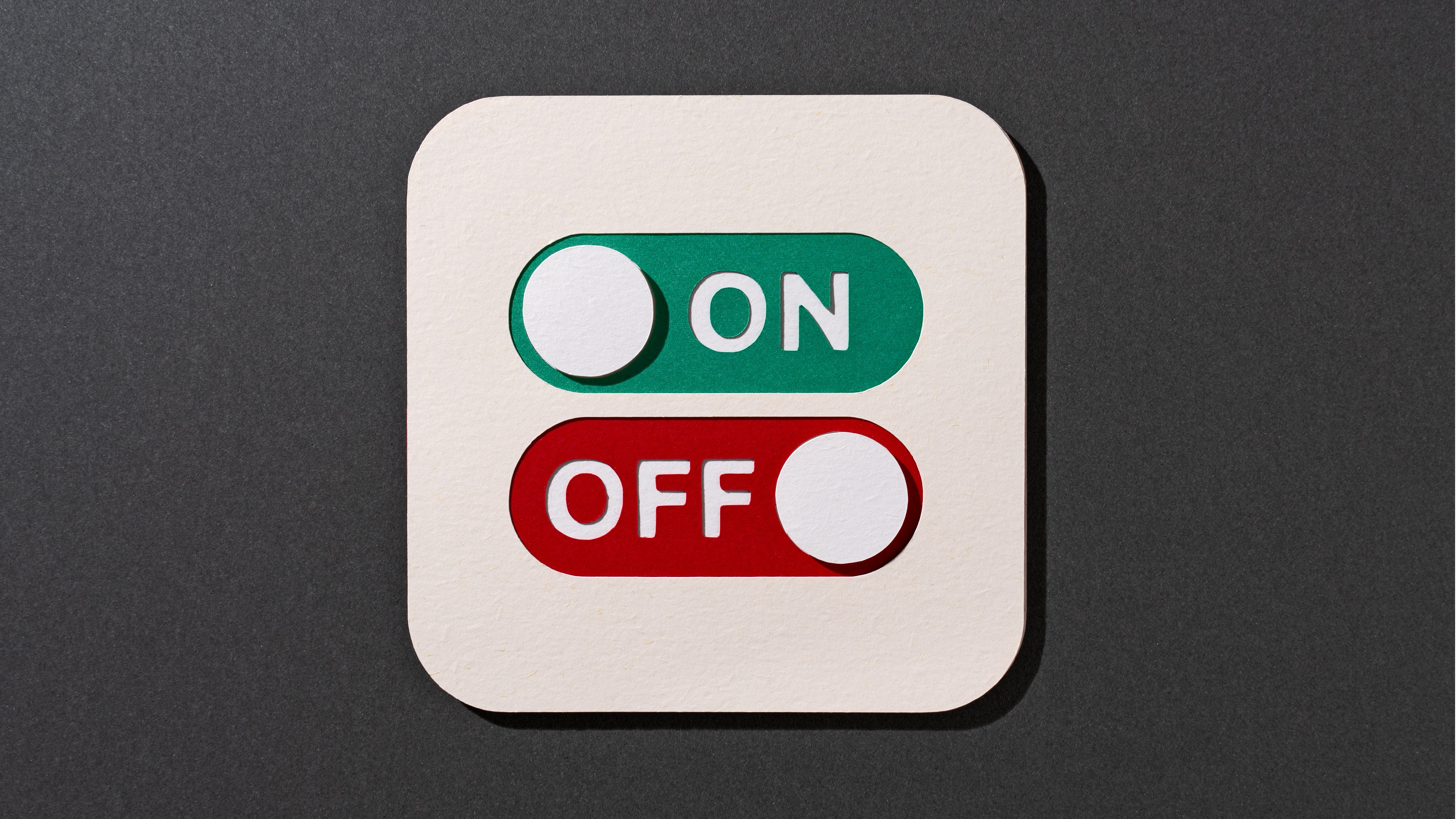Risk On, Risk Off: The Mr. Miyagi Approach to Retirement Planning
The first 10 years of retirement are some of the riskiest for your investments, but channeling your inner Karate Kid may help defend your funds against losses.


One of the iconic moments in movie history is the scene from 1984’s The Karate Kid, when Mr. Miyagi puts young Daniel to work waxing his car with the instruction, “Wax on, wax off.”
That phrase is about more than car wax. Daniel initially thinks the older man is taking advantage of him to get a few chores done rather than teaching him to defend himself as promised. However, the teenager soon learns that through movements involved in those chores, Mr. Miyagi has been teaching him karate fundamentals all along.
I like Mr. Miyagi’s approach to helping Daniel learn to defend himself. In a slightly different way, this method works with retirement planning and is called the “Risk On, Risk Off PortfolioTM.” As in The Karate Kid, there’s more behind those words than just a memorable phrase.

Sign up for Kiplinger’s Free E-Newsletters
Profit and prosper with the best of expert advice on investing, taxes, retirement, personal finance and more - straight to your e-mail.
Profit and prosper with the best of expert advice - straight to your e-mail.
So, what is meant by “risk on, risk off”? For an explanation, let’s take a look at the two distinctly different phases of a retirement journey and understand the relationship between where you are on this journey and the level of defense you must have against the risk that lies ahead.
Two phases, two approaches
The journey to retirement and beyond is in some ways like the journey of a mountain climber. There is a phase of the climb, where you climb up the mountain, and a phase of the descent, where you climb down. Each phase requires a different set of skills and tools, and even a different mindset.
First, let’s look at the phase where you climb up this proverbial mountain of retirement. This phase is what we call the growth phase. During the growth phase, your goal is simple, but not easy. You want to accumulate as many assets as you can while you work your way toward the summit of retirement. In this phase of your retirement journey, you will likely take a bit more risk with your investment portfolio, and depending on your comfort level with that risk, you may seek higher returns on this side of the proverbial retirement mountain.
Contrast that with the phase where you climb down the mountain. I like to call this the income phase, because for many, you begin to draw from the savings you accumulated in the growth phase. This phase is where things get much trickier, and where mistakes may carry dire consequences. As mountaineers who tackle Mount Everest will tell you, the descent is more dangerous than the climb.
Once you enter the retirement income phase, market losses will hurt your retirement account more than market gains will help you achieve your retirement goals. The rules are different on this side of the retirement mountain, and there are unfamiliar risks lying in wait around every turn.
Some more common risks may include changing tax rates in the retirement income phase that make it hard to know how much of the investment account belongs to you and how much belongs to the IRS. Also, sequence of returns risk makes things like average rate of return a useless metric in measuring the overall performance of a portfolio (more on sequence of returns risk below). Not to mention the fear of prolonged downturns that will hit you harder in the income phase than they ever did in the growth phase.
This is exactly where the Risk On, Risk Off PortfolioTM comes in.
Building a Risk On, Risk Off Portfolio
Warren Buffett, a sort of Mr. Miyagi of the business and investing world, has a couple of rules related to investing that are worth memorizing, especially for new retirees. Rule No. 1: Don’t lose money. Rule No. 2: Don’t forget rule No. 1.
The Risk On, Risk Off PortfolioTM is a diversified portfolio of investments that can be categorized into two main classes: Risk On investments and Risk Off investments.
Not to be confused with a risk-off trade, the Risk Off portion of this portfolio must consist of assets that are predictably stable in down markets while still maintaining their capital appreciation potential in good market conditions.
A few examples of Risk Off investments may be short-term bonds, Treasury bills, properly built fixed-indexed annuities, structured notes, money market funds or a variety of defined outcome ETFs in the marketplace today. Your comfort level with market risk will determine which asset you place your money in. Nevertheless, we want these assets to behave like cash in a downturned stock market, allowing us a safe place to “sell” for income should we need it without breaking Buffett’s rule No. 1. Simply put, the primary objective of this Risk Off position is preservation of capital. Capital gain/appreciation is the secondary objective.
On the Risk On side, we tolerate some market volatility if those assets are generating both income and capital appreciation potential. We aren’t concerned with the ebbs and flows of the stock market, but depending on your risk tolerance, there are ways to protect against excessive stock market declines even on this side of the portfolio. Examples of Risk On investments are blue-chip company stocks, some long-term growth stocks, dividend-yielding ETFs, buffered ETFs or stand-alone covered call strategies on overweight positions.
So, just how much of your retirement portfolio should be Risk Off and how much Risk On?
To a degree, this depends on the individual. However, my general view is you need at least seven to 10 years' worth of retirement income in the Risk Off position. Let’s say you need $40,000 of annual income from your savings on top of your Social Security and pension. My belief is that you should have between $280,000 and $400,000 in the Risk Off position. This will allow you to generate your needed income without selling securities at a loss even in market downturns. Couple this with the understanding that the first 10 years of retirement are some of the most vulnerable for your portfolio, and you can understand why leaving yourself exposed to extreme market volatility during this time can prove detrimental to your bottom line.
This is because of something called the sequence of returns risk. In simplest terms, sequence of returns risk means that when you retire and start withdrawing money from your accounts, your portfolio balance can be affected not just by how much your investments go up or down, but by when they go up or down.
Misleading average rates of return
The sequence of returns doesn’t matter when you are in the growth phase, because you aren’t withdrawing money from the accounts. Imagine you invested every year for 10 years, experiencing market gains and losses each year. In the growth phase, the order in which you experienced those gains and losses would not matter. Rearrange them in any order you like. The average return will be the same at the end and so will your portfolio balance.
But when you switch to the income phase, the order in which you experience those gains and losses is everything, and the average rate of return now means nothing.
Let’s look at the first 10 years of retirement. If your biggest gains happen early, and your biggest losses happen later, you will be in much better shape than if the reverse happened. This is because it’s difficult to recover from those early losses, especially since you were withdrawing money from the accounts at the same time the market was struggling.
In the income phase, losses hurt you more than gains help you, because you have a lot of ground to make up from a loss. Let’s suppose one year your account suffered a 20% market loss, and that same year you withdrew 5% from your account for income. Someone in the growth phase would have been down only 20%, but you are in the income phase and are now down 25%.
Impact of an incorrectly built portfolio
Let's take it one step further. Someone in the growth phase who experienced a 25% loss in the market would need a 33.3% gain the next year just to get back to even. But not you. Remember, you’re in the income phase. You need 5% for income that year, so you need a little over 38% to get back to even. Let that sink in. The market was down 20%. In an incorrectly built portfolio, you could find yourself needing nearly a 40% gain to get back to even. How long do you think the income in that portfolio would last?
Imagine if you retired at the beginning of 2000. You would have unknowingly been headed into the “lost decade” of returns. That rough patch from 2000 to 2010 began with the dot-com crash, followed by the Great Recession. If you entered into that retirement with your portfolio made up entirely of Risk On investments, even with a traditional 60/40 stock/bond mix, you would likely have been forced to come out of retirement and find a job to supplement your dwindling income. For an investor who found themselves in the income phase of retirement anytime throughout the lost decade, that was a time when the Risk On, Risk Off Portfolio would have provided them with the balance they needed.
While the concept of Risk On, Risk Off might be easy to understand in a broad sense, the details of building the Risk On, Risk Off PortfolioTM for your specific needs, is something that has to be calculated. That’s why it’s good to have a financial professional in your corner who has experience working with all the tools you need in the income phase, helping you get safely down the proverbial retirement mountain.
Ronnie Blair contributed to this article.
The appearances in Kiplinger were obtained through a PR program. The columnist received assistance from a public relations firm in preparing this piece for submission to Kiplinger.com. Kiplinger was not compensated in any way.
RD Smothers Wealth Management (RDS Wealth) is a state registered investment adviser. Registration as an investment adviser does not imply any level of skill or training. The oral and written communications of an adviser provide you with information about which you determine to hire or retain an adviser. For more information please visit: adviserinfo.sec.gov and search for our firm name. This is prepared for informational purposes only. It does not address specific investment objectives, or the financial situation and the particular needs of any person who may receive this report. Past performance is not indicative of future results. Information obtained from third-party sources is believed to be reliable though its accuracy is not guaranteed, and RD Smothers Wealth Management makes no representation or warranty as to the accuracy or completeness of the information, which should not be used as the basis of any investment decision.
The Retirement Income Certified Professional (“RICP”) designation is awarded by the American College to individuals who have compiled at least three years of professional experience, have completed three courses administered by the American College including a satisfactory score on a final course exam, and complete a minimum of 15 hours of continuing education every two years. For more information about the RICP designation, please visit www.finra.org/investors/professional-designations/ricp.
Want more guidance on retirement savings? Sign up for Kiplinger's six-week series, Invest for Retirement.
Related Content
Get Kiplinger Today newsletter — free
Profit and prosper with the best of Kiplinger's advice on investing, taxes, retirement, personal finance and much more. Delivered daily. Enter your email in the box and click Sign Me Up.

Dale Smothers is the founder, president and financial planner at R.D. Smothers Wealth Management. He has spent his career in the financial services industry working with retirees who are looking to worry less about their retirement income. Dale has a Master of Business Administration, his Series 7 and Series 66 licenses and holds the RICP® designation. Dale hosts a podcast and radio show, “The Retirement Matters Show,” where he talks directly to his listeners about the issues facing them in their retirement journey.
-
 Stock Market Today: Trump Retreats, Markets Rejoice
Stock Market Today: Trump Retreats, Markets RejoiceStocks rally, yields soften, the dollar rises, and even beaten-down names enjoy the wages of potential trade peace.
By David Dittman
-
 In Trump’s Economy Should 401(k) Savers 'Set It and Forget It?'
In Trump’s Economy Should 401(k) Savers 'Set It and Forget It?'It’s hard to bury your head in the sand when the markets are volatile. Here’s when it makes sense and when it doesn’t.
By Donna Fuscaldo
-
 Stock Market Today: Trump Retreats, Markets Rejoice
Stock Market Today: Trump Retreats, Markets RejoiceStocks rally, yields soften, the dollar rises, and even beaten-down names enjoy the wages of potential trade peace.
By David Dittman
-
 I'm 50 and My Home Is Worth $5 Million. Can I Retire Now?
I'm 50 and My Home Is Worth $5 Million. Can I Retire Now?It may be oh-so tempting to cash out your upscale home and leave work for good. But should you? We ask the experts.
By Maurie Backman
-
 Tesla Stock Pops as Elon Musk Promises DOGE Draw Back
Tesla Stock Pops as Elon Musk Promises DOGE Draw BackTesla reported a sharp drop in first-quarter earnings and sales, as the EV maker suffered a backlash to its CEO's political ambitions.
By Karee Venema
-
 Bouncing Back: New Tunes for Millennials Trying to Make It
Bouncing Back: New Tunes for Millennials Trying to Make ItAdele's mournful melodies kick off this generation's financial playlist, but with the right plan, Millennials can finish strong.
By Alvina Lo
-
 Early-Stage Startup Deals: How Do Convertible Notes Work?
Early-Stage Startup Deals: How Do Convertible Notes Work?Some angel investors support early startups by providing a loan in exchange for a convertible note, which includes annual interest and a maturity date.
By Murat Abdrakhmanov
-
 Stock Market Today: Stocks Soar on China Trade Talk Hopes
Stock Market Today: Stocks Soar on China Trade Talk HopesTreasury Secretary Bessent said current U.S.-China trade relations are unsustainable and signaled hopes for negotiations.
By Karee Venema
-
 How Can Investors Profit From AI's Energy Use?
How Can Investors Profit From AI's Energy Use?Global energy demand is expected to grow by leaps and bounds over the next several years as AI usage accelerates. Here's how to get a piece of the pie.
By Jacob Schroeder
-
 Americans Are Retiring Later: Will This Trend Last?
Americans Are Retiring Later: Will This Trend Last?Given a host of pressures to keep working, Americans are retiring later in life. Will regulatory and economic forces encourage you to work longer?
By Christy Bieber